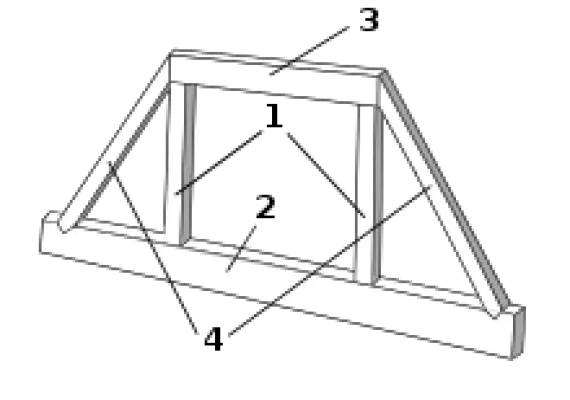What Is A Zero-Force Member in Construction?
What Is A Zero-Force Member in Construction?
A zero-force member is a structural element in engineering mechanics that experiences no external force when given a specific load. It can be found at pins on trusses, where three or fewer members meet and there is no load being applied to the area.
A zero-force member is neither in tension nor compression, instead, it remains at rest. As such, it is an important element of any truss structure which allows forces to be transferred from one point to another without disruption from applied loads.
How Do You Know If It Is A Zero-Force Member?
A zero-force member is a member of a structure that does not experience any external forces or reactions, such as support or loading. To determine if a member constitutes as such, one must first identify the joint it is connected to and take note of all members connected to it.
If there are only two non-collinear members with no external load or support reaction at the specified joint, then those two members will constitute zero-force members. This implies that they are just balanced with no net force present in them.
What Are The Two Types Of Zero-Force Members?
The two types of zero-force members are those in which two non-collinear members meet at an unloaded joint, and those where three members meet in an unloaded joint of which two are collinear and the third is a zero-force member.
Zero-force members are those that do not experience any force due to external loads, while other members receive forces or moments that cause them to bend or deform.
Examples of zero-force members can include tie rods connecting two parts of a truss structure or columns that support a beam but do not transmit any force across it.
What Are Zero Force Members’ Examples?
Zero force members are members of a structure, such as trusses, beams, and frames, that experience zero force in equilibrium. Examples include DE, DC, AF, and AB which make up two non-collinear members in a joint with no external load or support reaction.
These members have zero forces acting on them due to the absence of an external load or support reactions; thus they are known as ‘zero force’ members.
What Are Zero Force Members’ Rules?
The Zero Force Members Rules states that whenever three members form a truss joint, two of them being collinear and there is no external load or reaction present at that joint, then the third non-collinear member can be called a zero force member.
In order to simplify the analysis process of a truss, zero force members can be removed without affecting its main properties or characteristics.
Hence this rule proves to be significant in saving time and effort while examining the strength of any small structure created with the help of a truss.
What Are The Benefits Of Zero-Force Members?
Zero Force Members (ZFMs) offer many benefits to trusses and other structures. Structural stability and rigidity are improved due to the added support ZFMs provide for various loading conditions.
They also help in redistributing loads, reducing stress concentrations at certain points, preventing buckling under external loads, and ensuring optimal structural performance.
In addition, they reduce the need for additional materials required for bracing or column reinforcement and provide cost savings.
Their lightweight nature also helps reduce construction costs. Finally, ZFMs provide increased safety for the structure due to their ability to resist twisting moments which often result from wind loading or seismic activity.

